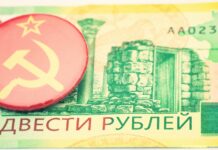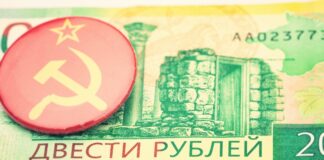For most Europeans and Americans, Christmas remains the main winter holiday. Of course, New Year’s Eve is celebrated all over the world, however, the most cheerful and richest gifts for celebrations still fall on Catholic Christmas December 25th. In Russia, the opposite is true: the overwhelming majority of Russians prefer New Year’s Eve.
New Year’s Eve and Christmas holidays in Russia are a little bit tricky. The winter holidays in Russia drag on for several weeks: Russians enthusiastically celebrate first Catholic Christmas, then New Year, after that the Orthodox Christmas – January 7th, and finally on January 13th they celebrate a holiday completely incomprehensible to foreigners: the Old New Year. But the most beloved and revered holiday in this long series of celebrations is New Year’s Eve from December 31st to January 1st. Now it seems that it has always been so. Meanwhile, the tradition of celebrating New Year’s Eve in Russia appeared much later than in Europe.

The tradition of celebrating New Year’s Eve was introduced in Russia by Peter the Great. Before this, the New Year in Russia fell on September 1st, and even earlier on March 1st. However, tsar, wishing to keep up with the West, forbade the celebration of the New Year in the fall, postponing the holiday by a special decree on January 1st.
The first New Year’s Eve in Russia was noisily marked by a parade and fireworks on the night of December 31st to January 1, 1700. Moscow was then the capital, Petersburg has not yet been founded, so all the celebrations took place on Red Square. However, from the new year 1704, the celebrations were moved to the northern capital. The main thing at the New Year’s holiday in those days was not a feast, but mass celebrations.

The Winter New Year in Russia did not immediately take root. However, Peter the Great was persistent and ruthlessly punished those who, according to the old tradition, tried to celebrate the new year on September 1st. He also strictly watched that by January 1st, the houses of nobles and commoners were decorated with spruce, juniper or pine branches. These branches were supposed to be decorated with fruits, nuts, vegetables, and even eggs. Moreover, all these products served not only as decoration but also as symbols: apples – a symbol of fertility, nuts – the incomprehensibility of divine providence, eggs – a symbol of developing life, harmony and complete well-being. Over time, the Russians got used to the new winter holiday.
Empress Elizabeth I continued the tradition of celebrating the New Year’s Eve, begun by her father. New Year’s Eve celebrations have become an integral part of the palace festivities. Elizabeth, a great lover of balls and amusements, arranged luxurious Christmas trees and masquerades in the palace. Under Catherine II, the New Year was also celebrated on a grand scale. In the 18th century, the Russian New Year’s table became especially intricate: the desire to surprise, amuse guests with unusual and unusual dishes came into the art of cooking
At the beginning of the 19th century, champagne became popular in Russia. At first, the Russians took sparkling wines with suspicion: they were called the “devil’s drink” because of the flying cork and the foamy stream from the bottle. According to legend, champagne gained wide popularity after the victory over Napoleon. In 1813, upon entering Reims, Russian troops, as victors, devastated the wine cellars of the famous Madame Clicquot house. However, Mrs. Clicquot did not even try to stop the robbery, wisely deciding that “Russia would cover the losses.” The astute Madame was right: the fame of the quality of her products spread throughout Russia. Three years later, an enterprising widow received more orders from the Russian Empire than in her homeland.

The reign of Emperor Nicholas I refers to the appearance of the first public fir tree in Russia and St. Petersburg. Before that, Russians decorated the house with only coniferous branches. The first dressed up fir tree lit up with lights in the room in 1852. And by the end of the nineteenth century, this beautiful custom had already become familiar not only in Russian cities but also in villages. It was time for soft drinks, ice cream, and cognac. At the turn of the nineteenth and twentieth centuries Russians preferred French, Spanish, fortified, Italian and German wines. Don sparkling wines were made as in imitation of champagne. Of course, people drank vodka, tinctures, and liqueurs; domestic Russian and German beer.
With Christmas in St. Petersburg at the beginning of the 20th century, the season of balls and festivities began. Numerous Christmas trees with obligatory gifts were arranged for children, ice palaces and mountains were built for folk entertainments, free performances were given.
After the revolution, in 1918, by Lenin’s decree, Russia switched to the Gregorian calendar, overtook the Julian calendar by 13 days. February 1, 1918, was immediately declared the 14th. But the Orthodox Church did not accept this transition and announced that it would celebrate Christmas according to the old Julian calendar. Since then, Orthodox Christmas in Russia has been celebrated on January 7th (December 25 according to the old style). Probably, it was then that a paradoxical tradition arose in Russia to celebrate the Old New Year on January 13th, according to the old Julian calendar.

In 1919, the new authorities abolished both Christmas and New Year. Former holidays turned into regular working days. But in many families, Russians continued to celebrate the New Year’s Eve secretly, although with great care – they placed Christmas tree behind the tightly curtained windows. Probably, it was in those years that the New Year in Russia began to be celebrated not with masquerades and dances, but with dinner. After all, it was necessary to celebrate secretly, so as not to wake up the neighbors. This continued until 1935. In 1935, the “highest directive” changed. It turned out that the New Year is a wonderful holiday, which can also once again testify to the achievements of the country of the Soviets. Celebrating the New Year in the fifties was no longer considered reprehensible, so it became possible to gather not only in a narrow circle but also in a large company.
The main action on New Year’s Eve was the opening of a bottle of “Soviet champagne” to the battle of the Kremlin chimes. Dances and masquerades were almost completely excluded from the New Year’s Eve program: in cramped apartments, one had to choose: either a table or dances. With the advent of TVs in Soviet families, the table finally won. On New Year’s Eve, television always prepared an extensive entertainment program: the annual Blue Lights were especially popular.
In 1991, with the beginning of the Yeltsin era, after an almost 75-year break, people began to celebrate Christmas in Russia again. January 7th was declared a day off: Christmas services were shown on TV and it explained to the Russians how to conduct the holy day. However, the tradition of celebrating Christmas in Russia has already been lost. Several generations of Soviet people raised in the spirit of atheism did not understand the essence or form of this holiday. So far, the confrontation between secular and church traditions is confidently won by the New Year’s Eve, which for many years holds the position of the beloved family holiday of Russians.




